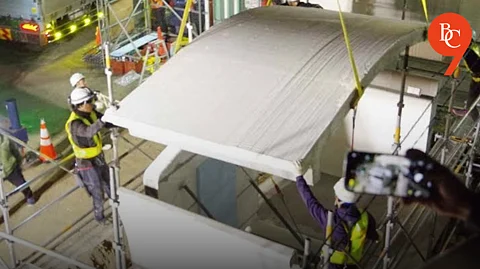

Japan has achieved a milestone in railway infrastructure with the construction of the world’s first 3D-printed train station. Developed by West Japan Railway Company (JR West) in collaboration with Japanese 3D printing firm Serendix, the new Hatsushima Station was assembled in just six hours, showcasing the immense potential of advanced construction technologies.
The station was built during the night, between the departure of the last train and the arrival of the first train the next morning. Prefabricated components, including walls and a curved roof, were printed using mortar-based 3D printing and reinforced with steel before being transported to the site for assembly.
The one-story concrete building measures 2.6 meters in height, 6.3 meters in width, and 2.1 meters in depth, with a total area of approximately 10 square meters. The construction cost was reportedly half that of traditional methods, making it a viable solution for infrastructure projects amidst labor shortages.
Unlike traditional formwork methods that limit architectural creativity, 3D printing enables intricate designs and elegant curves without requiring special molds. The station’s reinforced concrete structure offers durability comparable to conventional buildings, ensuring safety in Japan’s earthquake-prone regions. With Japan’s aging population and declining workforce, 3D printing offers an efficient alternative to traditional construction methods.
JR West plans to evaluate Hatsushima Station's construction, maintenance costs, and durability before expanding this technology to other stations across Japan. This project could pave the way for modernising railway infrastructure globally while reducing costs and environmental impact.
The successful completion of Hatsushima Station marks a revolutionary step in railway construction, blending speed, sustainability, and cost-efficiency. Japan continues to innovate with 3D printing technology, this project serves as a model for future infrastructure development worldwide.
